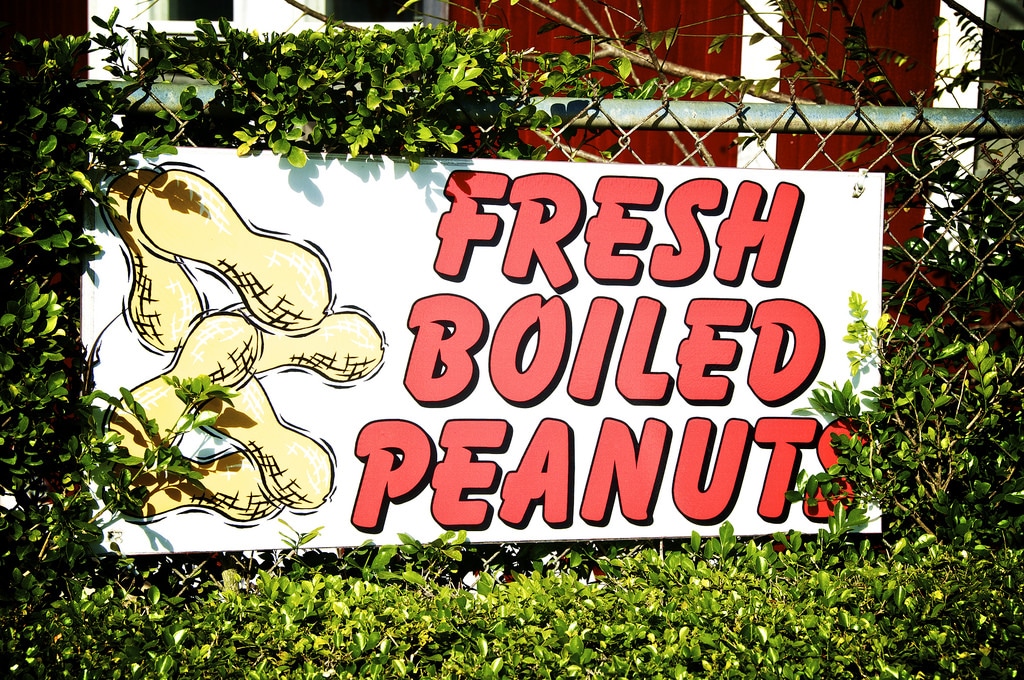The earliest known history of the peanut was that it originated in Brazil, South America. Visiting Portuguese and Spanish ships transported the peanut to Africa around 1500. Although now commonly referred to as a peanut, the peanut is actually a legume, a member of the bean family. After flower pollination, the stalks actually bend and burrow into the earth, where the fruit develops underground. The boiled peanut is specifically green peanuts fresh out of the ground.
Other common names were ground nuts, ground peas, pindars (from the Kongo language – mpinda), and goobers – from the Angolan word nguba.
Although the history of the peanut is vague, it is believed it was brought to the southeast US during the 17th and 18th centuries. Carried on ships for provisions on long voyages. The Gardner’s Dictionary of 1754 states “all the settlements in America abound with it (the peanut)”.
In 1847 the first peanut recipe was included in Sarah Rutledge’s book Carolina Housewife a recipe for ground-nut soup. Which interestingly states ingredients as “beaten peanuts simmered with a pint of oysters and a seed pepper”.
The nut also was the inspiration for the acclaimed song Goober Peas printed as sheet music in New Orleans in 1866, composed by A. Pinder and P. Nutt. With its catchy refrain of “Peas! Peas! Peas! Peas! Eating goober peas! Goodness how delicious, eating goober peas.”
Many state that the history of boiled peanuts started during the Civil war (1861-1865). When troops were cut off from supply chains, peanuts became an important source of food. Other historians claim that the reason was not desperation, but more likely that the soldiers liked the tasty snack. The easiest way for soldiers to cook the peanut was roasted or boiled. By adding salt in the boiling process the peanut could be preserved for up to seven days, not only that but the salt killed impurities and bacteria. No one quite knows where the salt supplies came from.
Soldiers were often referred to as ‘goober-grabbers’. In 1856, the Jackson Clarion of Mississippi stated the soldiers “never fought better than with a goober patch in their rear”.
With shortages abounding during the war the peanut was used in a variety of manners including machine oil, cooking oil, feeding livestock, and acting as a coffee substitute.
As the popularity of the peanut increased, a result of demands from the north, more and more peanuts were shipped to the northern states. In 1871, the Scientific American states “There is hardly an article of American production that has grown so rapidly in importance as the peanut”.
By 1921, ‘Hawking’ peanuts became the side hustle of small sidewalk vendors, shops, and most notably the roadside stands.
During the 1930s cooks were vying for the title of best peanut cooker in their area.
The turn of the 20th century is when boiled peanuts started to become the snack of choice in Southern society. It was quite fashionable to serve boiled peanuts at weddings and parties.
Today the peanut is incorporated into many gourmet recipes such as “country ham braised peanuts” PBS, A Chef’s Life, Vivian Howard.
As for this Southerner, I’ll stick to the good old boiled peanut!




